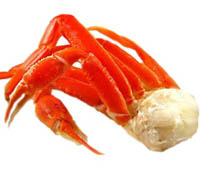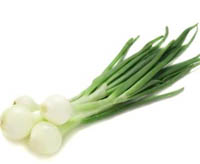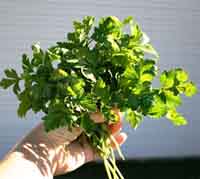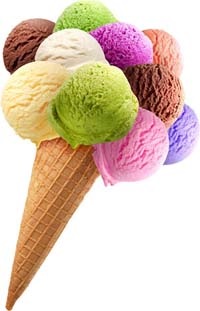Do You know what useful substance we consume with food?

- meat of marine shellfish- contains a lot of useful substance! It is especially a lot of iodine, sodium, calcium, phosphorus, protein, but fat, by the way, almost not at all! There are trace elements - up to 7%. They include thiamine, riboflavin, vitamin B12, which is especially necessary for our nervous system, vitamin B12 is still involved in the circulation. Magnesium in combination with vitamin of the group B does a shrimp valuable natural remedy for nervous exhaustion and emotional overload. Part of the shrimp is taurine nourishes the blood vessels and muscles, which affects their tone and elasticity. This aminoacid is usefull for us to maintain good vision. A rare polyunsaturated fatty acids contained in the shrimp meat, also normalizes the heart and blood vessels, reduce cholesterin in the blood.

- green onion - useful, especially when it is necessary to maintain immunity. This product is a champion among the vegetables with the content of zinc (Zn). A deficiency of this element leads not only to hair loss and brittle nails, but also leads to the possibility to get some infectious diseases, colds, manifestation of allergic reactions. Green onions helps to strengthen the walls of blood vessels and heart muscle. In addition, this product is rich in calcium (Ca) and phosphorus (P), contains sugar, ethereal oils, enzymes, vitamins (ascorbic acid - vitamin C, riboflavin, carotene - vitamin a).
- Parsley - is one of the leading places by the number of useful substance.

Hard to believe, but parsley 5 times greater than the lemons and oranges for vitamin C. To meet the need for vitamin C you can eat 7 to 10 fresh leaves of parsley in a day. Many vitamin A (20 mg) in the parsley, vitamins B1, B2, nicotinic acid, and the elements: potassium (K), calcium (Ca), magnesium (Mg), phosphorus (P), iron (Fe), there are those rare, but very necessary elements such as lithium (Li), aluminum (Al), molybdenum (Mo), nickel (Ni), titanium (Ti), manganese (Mn).
In addition, parsley contains the element germanium (Ge), which is involved in supplying our cells with oxygen (O2), prevents the development of tumors!
- Spinach - the leaves of this plant also contain useful substance in the form of biologically active substances: proteins, sugars, organic acids, vitamins, elements (phosphorus(P), iron (Fe), potassium (K), magnesium (Mg), iodine (I2), sodium (Na)).
The composition of the proteins includes all the essential amino acids. It is rich for vitamins (especially group B), strengthening the nervous system. Vitamin E - strong antioxidant, protects cells from aging! This product is recommended for debilitated patients and pregnant women. In addition, spinach is rich for vitamin D and mineral salts, necessary for the formation of bone tissue. But it is important to know that spinach is contraindicated if you have kidney disease and increased acidity of gastric juice!
- chicken egg - one egg provides 13 percent of the recommended daily dose of high quality protein, which helps to maintain muscle mass. In addition, protein provides a stable and sustainable energy. This is because the egg protein does not cause of increase sugar in blood sugar.
- raisins - contains a lot of boron (B), potassium (K), magnesium (Mg), manganese (Mn). Eating it, it is possible to avoid osteochondrosis, thyroid disease.
- grapefruit - contains vitamin (B2), vitamin (P),(C) and (A). In addition, greypfrut contains calcium (Ca) and potassium (K). All of these substances contribute to the rejuvenation and elasticity of the skin, give strength and shine to hair.
- dates - contain many vitamins, especially vitamin B5, are responsible for the energy state of the body and attention.
- pear is able to excrete heavy metals and toxins (substances that poison the organism, which can be ingested with food). Normalizes work of digestive organs, due to the fiber content.
- prunes - like dates, contains large amounts of B vitamins, improves metabolism in the body, increases resistance to stressful situations.
- dried apricots - an excellent source of potassium (K), iron (Fe), phosphorus (P), calcium (Ca), vitamin A and vitamin B5.
- tea rosebush" - a drink made from leaves of the African shrub. This tea contains more antioxidants than green tea, the ratio of sodium (Na) and potassium (K) is required for physical exertion and stress - is optimal. So 3 cups of tea "rosboch" provide the body with iron (Fe) for 1/3 daily needs. High content of vitamin C and copper (Cu) allows to better absorb iron and the formation of red blood cells!
- pineapple - increases enzymatic activity.
- apple - in the seeds of the Apple a lot iodine. If you eat a day 5-6 Apple seeds, the daily requirement for iodine will be provided.
- sunflower seeds - they have a lot of potassium, calcium and vitamin E.
- orange - a lot of folic acid (10-15% of daily intake), is an important "woman's" vitamin!
- olive oil - contains linoleic acid in large quantity, which promotes rapid healing of wounds, improves coordination of movement and vision!
- brew - this drink contains essential for growth vitamins B, E, PP, a superior blend of aminoacids and trace elements. Brew promote digestion, improves heart and blood vessels.
What is real ice cream?

Ice cream is not only a delicacy, but also good for the body! In a real (not fake) ice cream contains calcium, phosphorus, iron, lactose, vitamin C, vitamin a, vitamin B1, B2. In addition, ice - a source of easy to digest protein, it lifts the mood and cures of stress. In ice cream contain tryptophan - an essential for humans aminoacid, a natural tranquilizer, calming the nervous system and affect to areas of the brain responsible for the feeling of joy. But you should know that people who are overweight the aci not recomend, ice cream has different fat content. So milk ice cream contains 6% milk fat, in cream - from 10% to 20%.
How to determine the quality of ice cream?
If the ice cream really melts in your mouth, leaving no ice crystals and solid lumps, sebaceous and the more acidic, metallic taste or taste of burnt milk, then you can eat it! But otherwise, You definitely should alert the following examples:
deformed briquette with ice cream - so it was already thawed, so its composition could change and go bad taste. In addition, it could appear harmful microorganisms. If ice cream started to melt even before you brought it to mouth, it contains too much water or sugar. Uneven color of ice - is too long storage, or poor preparation (badly beaten). Ice crystals also talking about too much water! sand on the teeth (it happens!) indicates about incorrect frost, then the lactose has formed large crystals!